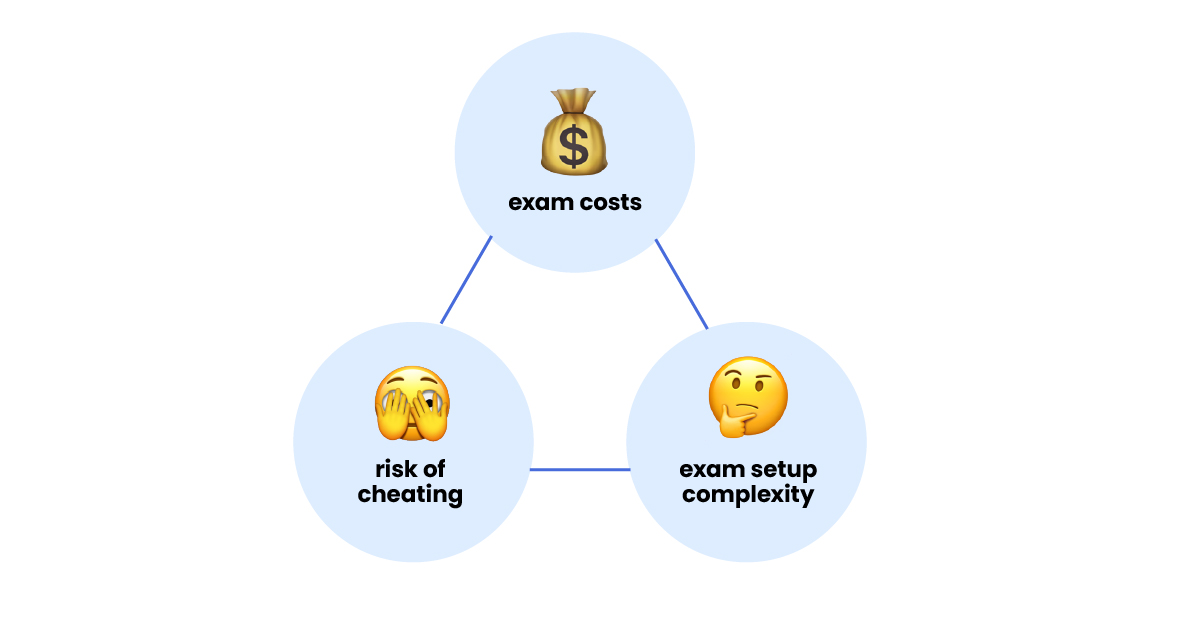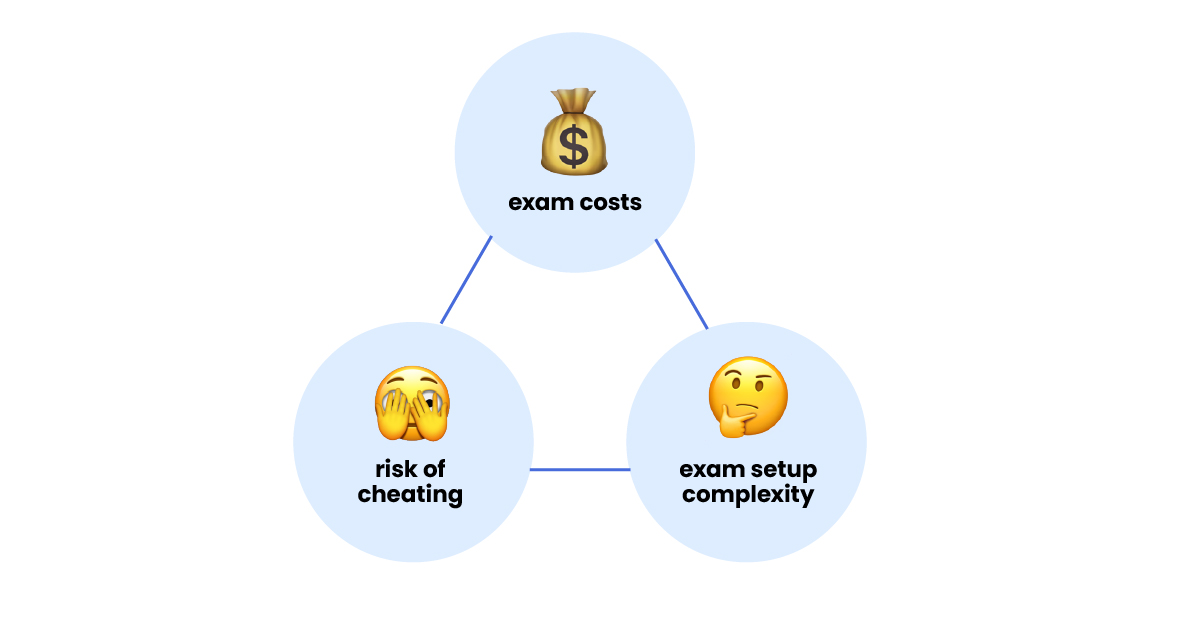
How to balance cost, risk, and complexity during BYOD exams
Apr 11, 2023 12:47:00 PM
The use of BYOD exams is increasingly common in schools, colleges, and universities. While students benefit from completing exams using their own devices, there are also challenges that need to be managed.
A key challenge is the risk of cheating which increases when students are provided with access to the internet, apps and stored information. However, finding a balance between the benefits of BYOD digital exams and the level of cheating risk is difficult, especially considering the cost and complexity of security solutions.
The increasing risk of cheating in digital exams
Many schools and students alike are benefiting from the growing popularity of BYOD device exams, with students naturally more engaged and the cost of equipment reduced, but there are many new challenges to tackle.
With devices providing students with access to the internet and a wealth of online resources, it is easier than ever for students to quickly search for potential exam answers. Even if internet access is blocked, students are still able to access notes and information stored within apps on their devices. In fact, according to research of 43,000 students, 59% admitted to cheating during a test!
Software is available to prevent cheating in BYOD digital exams, such as lockdown tools, secure browsers, remote proctoring, and biometric authentication. However, reducing the risk of cheating increases the cost and complexity of the solution.
Finding the optimal balance for exam cheating security
There are several factors which schools need to consider when comparing exam cheating security options, and a careful balance is required.
- Cost to reduce the cheat risk – Cost is a key factor for schools considering cheating prevention tools. This includes purchasing, installing, and maintaining software, and training staff.
- Level of ability to cheat – BYOD exams have a higher potential for cheating than traditional pen and paper exams due to students' access to the internet, apps with notes, and communication with others.
- Complexity of managing security measures – Implementing security measures to combat cheating will naturally add a new level of complexity to exam administration, so it is important to consider the skills and capabilities of the teaching and IT team.
- Flexibility of the software – Schools have various exam types such as in-school and at-home exams. To prevent cheating, the software needs to be adaptable to different exam types, question formats, changing student numbers, and accommodating students with disabilities.
- Student experience – Creating an environment which supports students within exams to achieve their full potential is important, so the anti cheat system needs to be simple to use and operate. A complex system will increase the levels of stress and anxiety, which will not help students to reach their full academic capabilities.
- Teacher experience – Many schools have busy exam periods, and with teachers already stretched it is important to find a solution which is efficient. The system needs to be simple to implement and capable of handling a large number of students, as teachers are unlikely to have additional resources available.
From the factors above, it is clear that schools need to find a balance between those which impact their institution. Although every school will be different in its approach to exams and resources, the key points to consider when tackling cheating are the cost, the risk of cheating and the complexity of potential solutions, as highlighted in Figure 1 below.

Schools need to find a balance between the cost of cheating security, the scope and potential risk of cheating, and the complexity and time required to manage the solution
Cost, risk, and complexity – can they be balanced?
As the risk of cheating is reduced, the cost and complexity will naturally increase so a balance needs to be decided upon. This could be different for different schools, classes, and even individual exams, and there is no one size fits all approach. The ideal solution should fit with the individual requirements of the school, its budget, the risk, and the resources available.
 Finding a solution can prove difficult, with a university in the Philippines recently requiring students to wear ridiculous anti-cheating hats on their heads to prevent copying! Although this may not work within digital exams, there are effective options available such as the popular secure exam browsers.
Finding a solution can prove difficult, with a university in the Philippines recently requiring students to wear ridiculous anti-cheating hats on their heads to prevent copying! Although this may not work within digital exams, there are effective options available such as the popular secure exam browsers.
Secure exam browsers are an efficient and effective option for preventing cheating. They can be quickly installed and configured to prevent students from accessing unauthorised websites, copying and pasting text, and accessing tools and apps outside the exam. A more detailed explanation of the ETH Sercure Browser SEB if you are interested. Using these browsers eliminates the need to print, post, and store exam papers, and also reduces the marking and processing time in digital exams.
To reduce the risk of cheating, clear rules about the consequences of cheating should be communicated to students. A supportive learning environment can also discourage students from cheating. When students are provided with teaching and study materials, they feel more prepared and confident during exams. Fostering an environment focused on academic values, honesty, and integrity can further discourage cheating.
Helping schools to effectively balance the risk of cheating, cost and complexity
Here at Nudge, we are committed to developing efficient IT solutions that provide real benefits to our clients. If you are an IT manager, teacher or headteacher and are wondering how to balance so many factors, our simple check sheet will help you navigate the decision. Implementing a solution such as secure exam browsers will require planning, investment, and training, but with so much flexibility and security, they are an excellent option for schools that are looking to reduce the risk of cheating.
Submit a comment